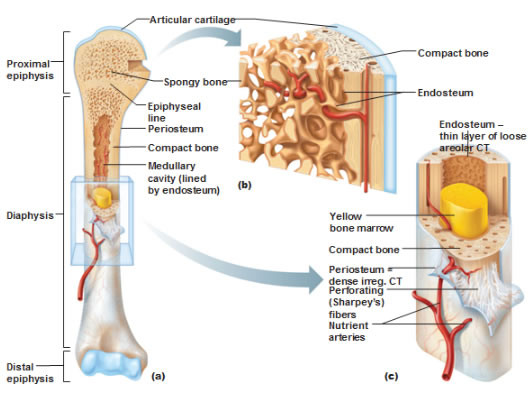Structure
Do you want me to also include a diagram-style breakdown (like a flowchart of stem cell → blood cell lineages) to make the physiology clearer?
+++++++++++++++++++++++++++
Bone marrow is in the medullary canals of long bones and in the small cavities of cancellous or spongy bone.1
The marrow is supplied by nutrient arteries, which divide and eventually give rise to venous sinusoids that are lined by endothelial cells and adventitial cells.
The frond-like tissue between the sinusoids contains a mixture of fibroblasts, fat cells, mononuclear cells (including lymphocytes and macrophages), and hematopoietic cells at various stages of maturation.
In the adult, red blood cells, many white blood cells, and platelets are formed in the bone marrow.
In the fetus, blood cells are also formed in the liver and spleen. In children, blood cells are actively produced in the marrow cavities of all the bones.
By age 20, the marrow in the cavities of the long bones, except for the upper humerus and femur, has become inactive.
75% of the cells in the marrow belong to the white blood cell–producing myeloid series and only 25% are maturing red cells, even though there are over 500 times as many red cells in the circulation than white cells. This difference reflects the fact that the average life span of white cells is short, whereas that of red cells is long.
Hematopoietic stem cells (HSCs) are bone marrow cells capable of producing all types of blood cells. They differentiate into committed stem cells (progenitor cells) which in turn form the various types of blood cells. There are separate progenitor cells for megakaryocytes, lymphocytes, erythrocytes, eosinophils, and basophils; neutrophils and monocytes arise from a common precursor. The bone marrow stem cells are also the source of osteoclasts, Kupffer cells , mast cells, dendritic cells, and Langerhans cells.

The bone marrow stroma consists principally of a network of sinuses that originate at the endosteum.